1. Introduction: How to Integrate Smart Tech into Your Kitchen Design
The kitchen may be described as the central point of most homes where meals are prepared, and links are formed. The increase in the complexity and rate at which we live our daily lives calls for efficiency, convenience, and sustainability. Enter smart kitchen technology. This integration alters the characteristics of how we engage with the space as well as how we interact within the space. Whether for refrigerators that can sense and detect foods or voice-controlled assistants, adding technology in the kitchen adds to the functionality of activities performed and, in some instances, the meals prepared. This article will highlight various possibilities for introducing smart technologies into kitchen design.
2. Understanding Smart Kitchen Tech
Smart kitchen technology refers to devices and appliances connected via the internet and can be controlled remotely or automatically. These gadgets can be controlled using apps, voice commands, or touch screens, offering unmatched convenience.
Benefits of Smart Appliances
- Efficiency: Smart appliances save time by automating tasks, like pre-heating ovens or setting coffee makers on a schedule.
- Energy Savings: Most smart appliances are designed with energy efficiency in mind, reducing your utility bills.
- Enhanced Experience: Imagine getting a notification on your phone when your groceries are running low or using a voice assistant to look up a recipe while cooking.
3. Smart Appliances for Every Kitchen
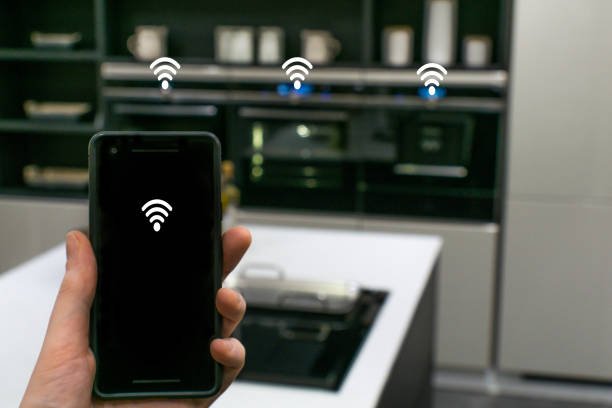
Smart appliance integration is nothing to worry about if you do not want to renovate the kitchen. You can start by improving a few significant ones, like computers and laptops.
Smart Refrigerators
These fridges have touchscreen capabilities with which you can input your shopping list, check the remaining dates of the foods and even search for recipes. Some of them come with internal cameras to see what is inside the refrigerator when you are at the supermarket.
Smart Ovens
Smart ovens have applications that can begin preheating even when you are still in the living room. They also have preset recipes and cooking options to guide you as you cook and guarantee that your foods are well cooked.
Smart Dishwashers
A smart dishwasher, for instance, can be programmed to run during off-peak energy periods, which are cheaper than the other periods. They sometimes come with water sensors to enable one to use minimal water and also to notify when the detergent is low.
4. Smart Lighting Systems
Another important factor to consider is the lighting, which enhances the kitchen’s aesthetic value and increases productivity.
How Smart Lighting Transforms the Kitchen
Smart lighting systems let you control the level of brightness, color, and direction of the lighting just by clicking a button on your phone or even verbally. For example, you can switch off the lights to create a rather romantic setting for dinner or switch the lights on while preparing food.
Types of Smart Lighting
- LED Smart Bulbs: Energy-efficient bulbs that can change color and brightness.
- Motion Sensors: Lights that turn on when you enter the kitchen.
- Under-cabinet Lighting: Smart lighting that makes cooking tasks easier.
5. Voice-Controlled Assistants
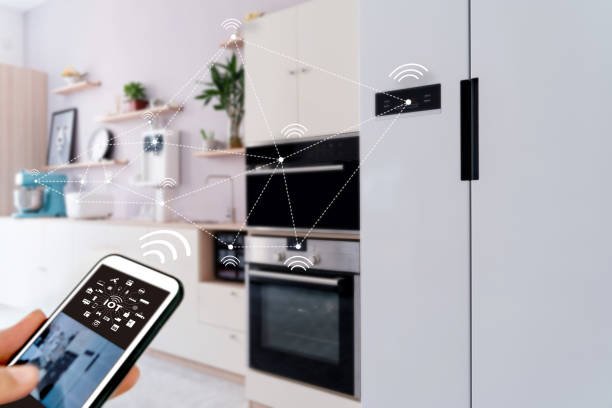
Smart varieties such as Amazon Alexa, Google Home, and Apple Siri are now almost part of every household, much like in the kitchen.
Using Alexa and Google Home in the Kitchen
These assistants enable one to operate several gadgets without using his own hands, making it very easy to juggle between different tasks. They can set timers, play music, ask for cooking tips control smart appliances, and more, all through cooking.
Benefits of Voice-Controlled Tech
- Hands-Free Convenience: No need to touch your phone or device while handling raw food.
- Integration with Other Smart Devices: Seamlessly connect your voice assistant to other smart kitchen gadgets.
6. Smart Faucets and Water Systems
Smart faucets are one of the most straightforward introductions of technology in your kitchen area.
The Convenience of Smart Faucets
This design means that less touch is made on the devices, leading to less transfer of bacteria, especially if your hands are not clean. They can also provide precise quantities of water which might be useful in cooking and other related baking processes.
Water Conservation with Smart Technology
Secure Water Management systems track consumption and inform you about possible leakage. They assist in saving water and performing repairs.
7. Integrating Smart Cooking Devices

Smart cooking devices remove the element of uncertainty when preparing food making them ideal for any anyone who wants to up their cooking game.
Smart Cooktops
These cooktops feature precision cooking, which means you can choose the exact temperature of the burners. Some even have additional features, such as sensors that help them adapt to the type of heat being used when the pan is removed.
Smart Thermometers
They can be combined with a phone application, to monitor the internal temperature of your meals constantly.
Smart Cooking Pots
The traditional pressure cookers, slow cookers, and air fryers have evolved into smart variants. By integrating with other applications, you may operate the unleashing cooker, set cooking minutes/ hours, and be notified when the food is well cooked.
8. Smart Kitchen Layout Planning
Implementing smart technology in your kitchen effectively requires much more than replacing your kitchen appliances.
Designing Your Kitchen for Smart Tech
Think about the counter space and storage needed for your devices. Also, consider the sockets and ports for appliances that you will be required to connect through Wi-Fi. Including a charging dock for equipment such as tablets or smartphones can also boost the level of convenience.
Importance of Ergonomics
Arrange your kitchen so that there will be easy traffic between certain common zones: cooking, washing, and storage. Smart technology aims to ease the burden of everyday activities, so ensure that you design it with this in mind.
9. Connecting Smart Tech with Apps

Another advantage of a smart kitchen, if I may add, is that you can command it through your phone.
Benefits of Controlling Your Kitchen from Your Phone
Even if you are in the kitchen doing your grocery shopping somewhere else in the building, or on your way home from work, having the ability to monitor and control your appliances is now possible in a very flexible way.
Best Apps for Smart Kitchens
- SmartThings: Integrates all your smart appliances into one app.
- Innit: Helps you discover new recipes and cook with your smart devices.
- Yummly: Syncs with smart ovens and cooktops to guide your cooking process.
10. Ensuring Security and Privacy
Like any other connected technology, the security issue is of great concern in Smart Kitchens.
Protecting Your Smart Kitchen Devices
Ensure that all of the devices you’re using are on a safe Wi-Fi network connection. Deleting default passwords is another security step, as is setting up two-factor authentication codes.
Managing Data Privacy
Pay attention to the type of information your devices are capturing. Always read privacy policies and uncheck all the options that are not necessary for a certain site.
11. Energy Efficiency and Sustainability
Smart kitchen appliances can significantly reduce your household’s energy footprint.
Energy-Saving Smart Appliances
This makes many smart appliances operate during off-peak energy times, making them lighter in the pocket and able to cater to utility bills. Data tracking capabilities enable the user to monitor and correct energy use.
The Role of Tech in a Greener Kitchen
Proper use of gadgets like smart water heaters, dishwashers, refrigerators, and others uses less water and electricity, making them energy efficient.
12. Budget-Friendly Smart Kitchen Ideas
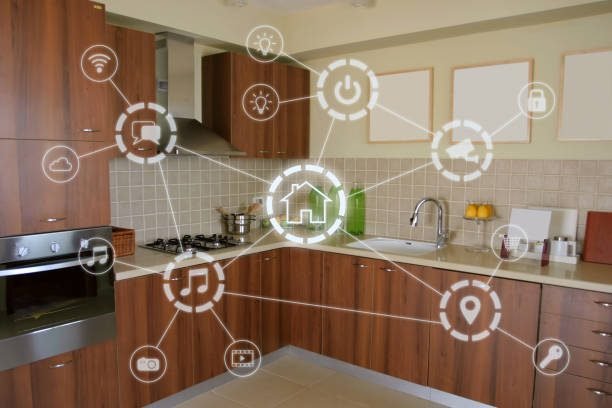
Smart is, in fact, not costly, and you don’t necessarily have to sell to acquire optimal benefits from technology.
Affordable Smart Tech Options
Begin with simple gadgets such as smart plugs, which enable you to switch on/off your appliances with the use of your phone or voice. There is also a Smart Assistant, which tends to be an entry-level Smart gadget that can control more than one Smart device.
How to Start Small
If you do this gradually and choose when to buy a new appliance, there are certain to be sales or refurbished appliances available.
13. The Aesthetics of Smart Kitchens
This is perhaps one of the disadvantages of adopting smart tech to enhance the kitchen since the best match between the technology and the room’s style is discovered.
Blending Smart Tech with Modern Design
To blend easily into your kitchen, you should choose appliances that complement the same color and style as your kitchen furniture. Silver and black are the most common finishes for stainless steel, giving it a modern appearance.
Creating a Seamless Look
Some smart devices are engineered to be as inconspicuous as possible. One should avoid placing numerous appliances, such as toasters, coffee makers, grinders, blenders, etc., on the countertop and instead use built-in or under-counter appliances.
14. Expert Insights on Smart Kitchens
Experts agree that the future of kitchen design is all about creating functional and sustainable spaces.
Insights from Kitchen Designers
Many designers suggest starting with the tech that will make the most impact, like a smart fridge or oven, and building from there. The key is to ensure that your smart tech enhances your daily routines without overwhelming the space.
What the Future Holds for Smart Kitchen Design
As the days go by, you will find that more devices are connected and interwoven; hence, your kitchen appliances will also be connected.
15. Troubleshooting Common Issues
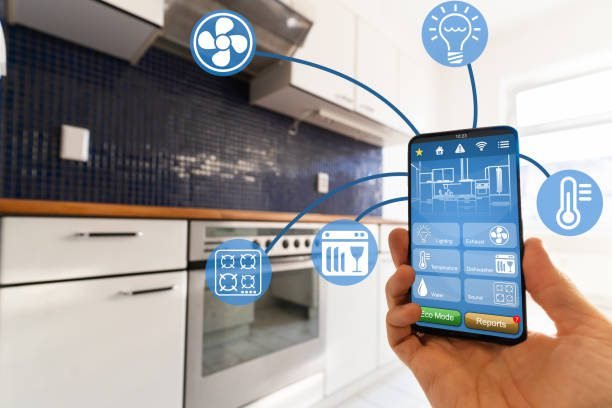
No technology is perfect, and smart kitchen devices can sometimes face connectivity issues.
Dealing with Connectivity Problems
Ensure your Wi-Fi connection is strong and consider adding Wi-Fi boosters if needed. Restarting the device or the app can often resolve minor issues.
Ensuring Compatibility
Check compatibility between different brands and devices before purchasing. Most major smart tech systems, like Google Home and Amazon Alexa, are compatible with various appliances.
16. Future Outlook on Smart Kitchens
The future of smart kitchen tech is exciting and full of possibilities.
Emerging Smart Tech for Kitchens
We can expect more AI-driven appliances, such as fridges that automatically order groceries or ovens that adjust cooking times based on the weight and type of food.
Future Trends to Watch
Look out for more integration of eco-friendly technologies that help minimize your environmental footprint while maximizing convenience.
17. Conclusion
Smart kitchen technology is revolutionizing how we cook, clean, and interact with our homes. Integrating smart tech into your kitchen enhances functionality and convenience, from energy-saving appliances to voice-controlled assistants. Start small, build over time, and enjoy the benefits of a modern, connected kitchen.

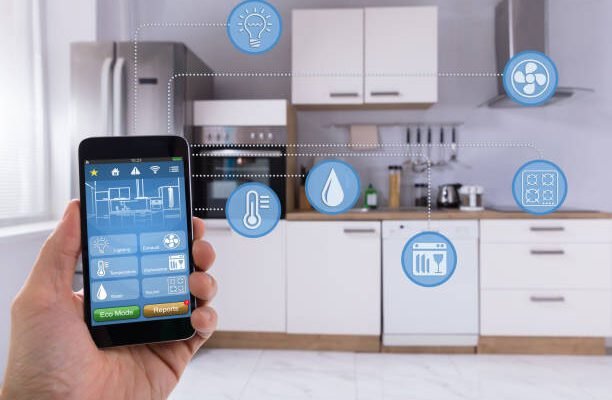
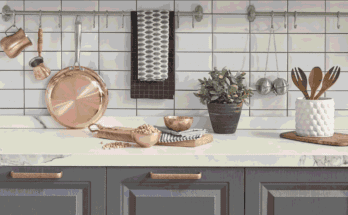
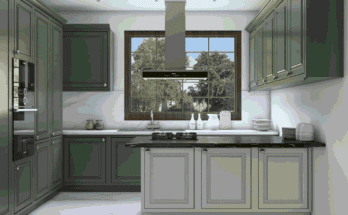
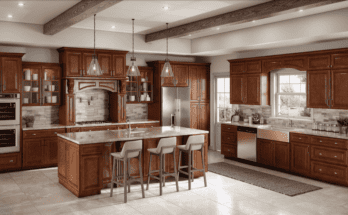
4 Comments on “How to Integrate Smart Tech into Your Kitchen Design”